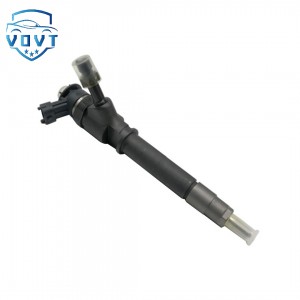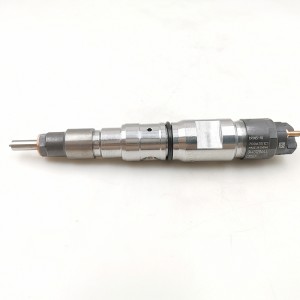Made in China Fuel Injector 0445115062 Diesel Fuel Injector 0 445 115 062 for Bosch
Products Description
| Reference. Codes | 0 445 115 062 |
| Application | / |
| MOQ | 4 PCS |
| Certification | ISO9001 |
| Place of Origin | China |
| Packaging | Neutral packing |
| Quality Control | 100% tested before shipment |
| Lead time | 7~10 working days |
| Payment | T/T, L/C, Paypal, Western Union, MoneyGram or as your requirement |
How a Diesel Engine Works
The process of a diesel engine converting heat energy into mechanical energy is achieved through four continuous processes: intake, compression, work and exhaust. Each such process is called a working cycle. Any engine that completes a working cycle by rotating the crankshaft twice and reciprocating the piston four times is called a four-stroke engine. Working principle of a four-stroke diesel engine:
1. Intake stroke
The crankshaft drives the piston to move from the top dead center to the bottom dead center. At this time, the intake valve is open and the exhaust valve is closed. During the movement of the piston, the volume of the cylinder gradually increases, forming a vacuum, so the combustible mixture is sucked into the cylinder through the intake valve until the piston reaches the bottom dead center and the intake valve is closed.
Due to the intake resistance of the intake system, the pressure of the gas in the cylinder at the end of the intake is lower than the atmospheric pressure, about 0.075MPa~0.09MPa. Due to the heating of high-temperature parts such as the cylinder wall and piston and the high-temperature residual exhaust gas left in the previous cycle, the gas temperature rises to 370K~440K. What enters the cylinder during the intake stroke is not a combustible mixture, but pure air.
2. Compression stroke
At the end of the intake stroke, the piston moves from the bottom dead center to the top dead center driven by the crankshaft, and the cylinder volume gradually decreases. At this time, the intake and exhaust valves are closed, and the pure air is compressed. The compression ends when the piston reaches the top dead center. During the compression process, the gas pressure and temperature increase at the same time, and the mixture is further evenly mixed. Since the compression ratio of diesel is large, about 15 to 22, the temperature and pressure at the end of compression are relatively high, the pressure can reach 3MPa to 5MPa, and the temperature can reach 800K to 1000K.
3. Power stroke
At the end of the compression stroke, the fuel injection pump sprays the high-pressure diesel into the high-temperature and high-pressure air in the cylinder through the injector in the form of mist, which is quickly vaporized and forms a mixture with the air. Since the temperature in the cylinder is higher than the auto-ignition temperature of diesel (about 500K), the diesel mixture immediately ignites and burns by itself, and for a period of time thereafter, the pressure and temperature in the cylinder rise sharply while injecting fuel, pushing the piston downward to do work. During the power stroke, the instantaneous pressure can reach 5MPa~10MPa, and the instantaneous temperature can reach 1800K~2200K.
4. Exhaust stroke
When the power stroke is close to the end, the exhaust valve opens, the intake valve closes, and the crankshaft pushes the piston from the bottom dead center to the top dead center through the connecting rod. The exhaust gas is discharged from the cylinder under its own residual pressure and the push of the piston. When the piston reaches the top dead center, the exhaust valve closes and the exhaust ends. Because there is exhaust resistance in the exhaust system, at the end of the exhaust stroke, the pressure in the cylinder is slightly higher than the atmospheric pressure, about 0.105MPa~0.115MPa, and the temperature is about 900K~1200K.
Among the four strokes, only the power stroke generates power, and the other three strokes are auxiliary strokes to prepare for the power stroke, and they all consume some energy. In the first cycle when the engine starts, there must be an external force to rotate the crankshaft to complete the intake and compression strokes. When the power stroke begins, the working energy is stored in the flywheel through the crankshaft to maintain the continuation of subsequent cycles.





















